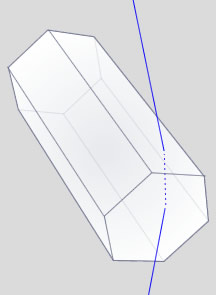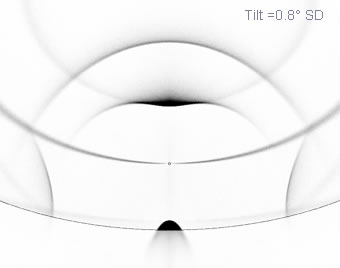
OPOD
What's New
Rays & Shadows
Water Droplets
Rainbows
Ice Halos
Contents
Crystals
Frequent Halos
Infrequent Halos
Why infrequent?
46° Halo
Formation
or supralateral?
Supra/infralateral
Parry Arcs
Lowitz Arcs
Moilanen Arc
Kern Arc
120° Parhelia
44° Parhelia
Subhorizon Arcs
Pyramidal
Multiple Displays
Other Worlds
Observing Halos
HaloSim
High Atmosphere
Links & Resources
Search - Index
123456789012345678
| 46� Halo Formation |
 |
 |
 |
|
46° halo ray path through a randomly aligned crystal. This is the traditional explanation for the halo. Rays enter and leave a side face and end face of a randomly aligned crystal (paths 13 or 31). The faces are inclined 90º to each other and the resulting minimum deviation angle is ~46°. However, a great many rays are deflected through larger angles and give the halo a diffuse outer edge. The 90° wedge disperses the colours more widely than those of the 60° wedge forming the 22° halo. |
 |
|

